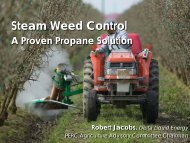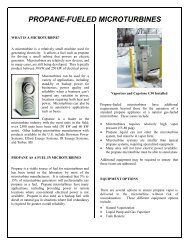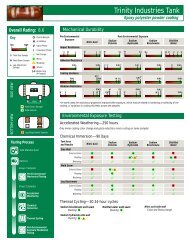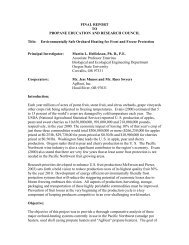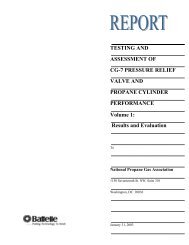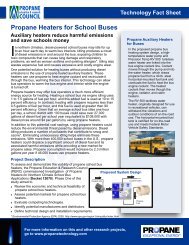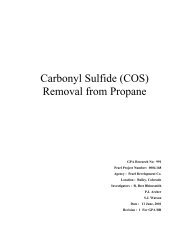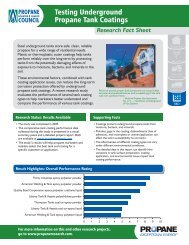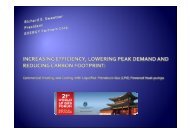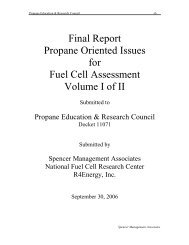Code Approval of Composite Propane Cylinders for Indoor Use ...
Code Approval of Composite Propane Cylinders for Indoor Use ...
Code Approval of Composite Propane Cylinders for Indoor Use ...
You also want an ePaper? Increase the reach of your titles
YUMPU automatically turns print PDFs into web optimized ePapers that Google loves.
Task 5 – Develop Detailed Fire Per<strong>for</strong>mance Test PlanThe purpose <strong>of</strong> Task 5 is to develop a test plan to gather the necessary data on the fireper<strong>for</strong>mance <strong>of</strong> composite cylinders filled with propane.Specific issues on fire per<strong>for</strong>mance that have been considered during the development <strong>of</strong> the testplan include:• BLEVE versus ballooning – if a cylinder yields sufficiently, there may be little to nochance that the cylinder can BLEVE, which produces the high-velocity fragments thatconcern fire fighters.• Types <strong>of</strong> fires – per<strong>for</strong>mance <strong>of</strong> equipment in fires may depend a great deal upon thetype <strong>of</strong> fire, whether an impinging, engulfing, or flash-over fire.• Cylinder orientation – cylinder orientation may affect the per<strong>for</strong>mance <strong>of</strong> a cylinderin various fire scenarios.• Cylinder fill level – fill level may also affect the per<strong>for</strong>mance <strong>of</strong> a cylinder in variousfire scenarios.• Pressure relief valve versus no pressure relief valve – as discussed in Phase I, the use<strong>of</strong> a relief valve may not be necessary in some cylinders, particularly those <strong>of</strong>composite construction. The yielding <strong>of</strong> the cylinder material, including the diffusion<strong>of</strong> propane through s<strong>of</strong>tening walls, may be sufficient to prevent a catastrophicrupture, and prevent the impinging torch effect <strong>of</strong> an open relief valve.• Per<strong>for</strong>mance when subjected to a fire hose water stream – per<strong>for</strong>mance <strong>of</strong> thecomposite cylinder under fire conditions may change when cooled with a fire hosewater stream.All <strong>of</strong> these scenarios were taken into consideration during development <strong>of</strong> the detailed fireper<strong>for</strong>mance test plan. In addition, feedback from the Fire Protection Research FoundationTechnical Advisory Panel was requested to help direct the development <strong>of</strong> the test plan. Theirinput is discussed further in the following section.Fire Protection Research FoundationTechnical Advisory Panel CommentsThe first meeting <strong>of</strong> the Foundation Technical Advisory Panel was held at NFPA Headquartersin Quincy, MA on June 23, 2005. Attendees included:James Burns National Association <strong>of</strong> State Fire MarshalsRichard Fredenburg State <strong>of</strong> North Carolina, Dept <strong>of</strong> Agriculture & ConsumerServices, Member, NFPA LPG CommitteeTed Lem<strong>of</strong>f NFPA staff liaisonPeter McMahon NFPA Fire Service SectionBob Morrill International Association <strong>of</strong> Fire ChiefsRoberto Rivera IAFC and NFPA Metro Chiefs SectionGary Santoro International Fire Marshals Association<strong>Composite</strong> <strong>Propane</strong> <strong>Cylinders</strong> 25February 2007<strong>for</strong> <strong>Indoor</strong> <strong>Use</strong> — Phase IIBattelle



